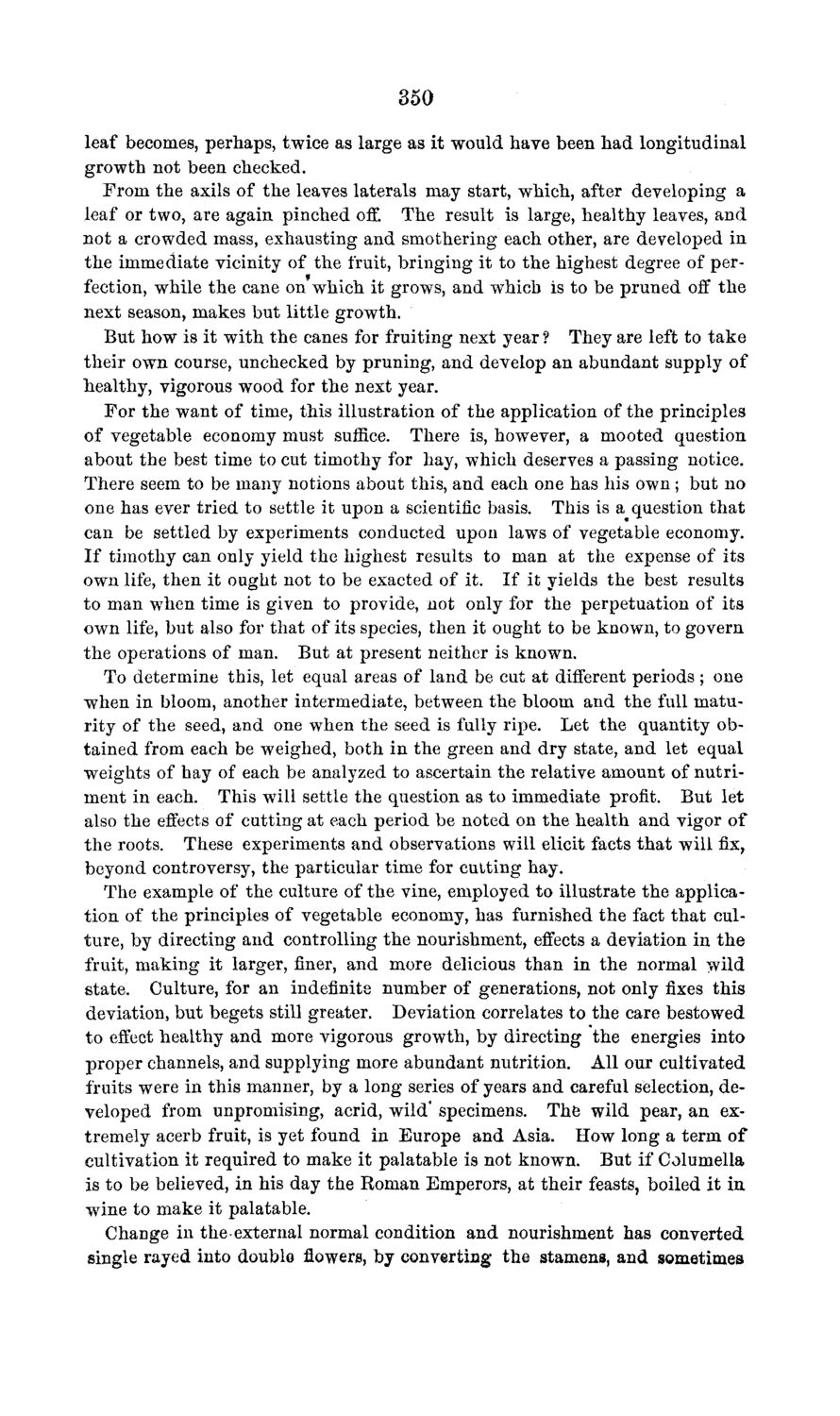| |
| |
Caption: Board of Trustees Minutes - 1869
This is a reduced-resolution page image for fast online browsing.

EXTRACTED TEXT FROM PAGE:
350 leaf becomes, perhaps, twice as large as it would have been h a d longitudinal growth not been checked. From the axils of the leaves laterals may start, which, after developing a leaf or two, are again pinched off. The result is large, healthy leaves, and not a crowded mass, exhausting and smothering each other, are developed in the immediate vicinity of the fruit, bringing it to the highest degree of perfection, while the cane on which it grows, and which is to be pruned off t h e next season, makes but little growth. But how is it with the canes for fruiting next year ? They are left to t a k e their own course, unchecked by pruning, and develop an abundant supply of healthy, vigorous wood for the next year. F o r the want of time, this illustration of the application of the principles of vegetable economy must suffice. There is, however, a mooted question about the best time to cut timothy for hay, which deserves a passing notice. There seem to be many notions about this, and each one has his o w n ; but no one has ever tried to settle it upon a scientific basis. This is a question t h a t can be settled by experiments conducted upon laws of vegetable economy. If timothy can only yield the highest results to man at the expense of its own life, then it ought not to be exacted of it. If it yields the best results to man when time is given to provide, not only for the perpetuation of its own life, but also for that of its species, then it ought to be known, to govern the operations of man. But at present neither is known. To determine this, let equal areas of land be cut at different periods ; one when in bloom, another intermediate, between the bloom and t h e full maturity of the seed, and one when the seed is fully ripe. Let the quantity obtained from each be weighed, both in the green and dry state, and let equal weights of hay of each be analyzed to ascertain the relative amount of nutriment in each. This will settle the question as to immediate profit. But let also the effects of cutting at each period be noted on the health and vigor of t h e roots. These experiments and observations will elicit facts t h a t will fix, beyond controversy, the particular time for cutting hay. The example of the culture of the vine, employed to illustrate the application of the principles of vegetable economy, has furnished the fact that culture, by directing and controlling the nourishment, effects a deviation in t h e fruit, making it larger, finer, and more delicious than in the normal wild state. Culture, for an indefinite number of generations, not only fixes this deviation, but begets still greater. Deviation correlates to the care bestowed to effect healthy and more vigorous growth, by directing the energies into proper channels, and supplying more abundant nutrition. All our cultivated fruits were in this manner, by a long series of years and careful selection, developed from unpromising, acrid, wild* specimens. The wild pear, an extremely acerb fruit, is yet found in Europe and Asia. How long a term of cultivation it required to make it palatable is not known. But if Columella is to be believed, in his day the Roman Emperors, at their feasts, boiled it in wine to make it palatable. Change in the external normal condition and nourishment has converted single rayed into double flowers, by converting t h e stamens, and sometimes
| |